
Niki de Saint Phalle
b. 1930 — d. 2002
The Niki Charitable Art Foundation
I used to think there was a need to provoke, to attack religion, and the generals. And then I understood that there is nothing more shocking than joy. — Niki de Saint Phalle
Artwork
Exhibitions

Niki de Saint Phalle
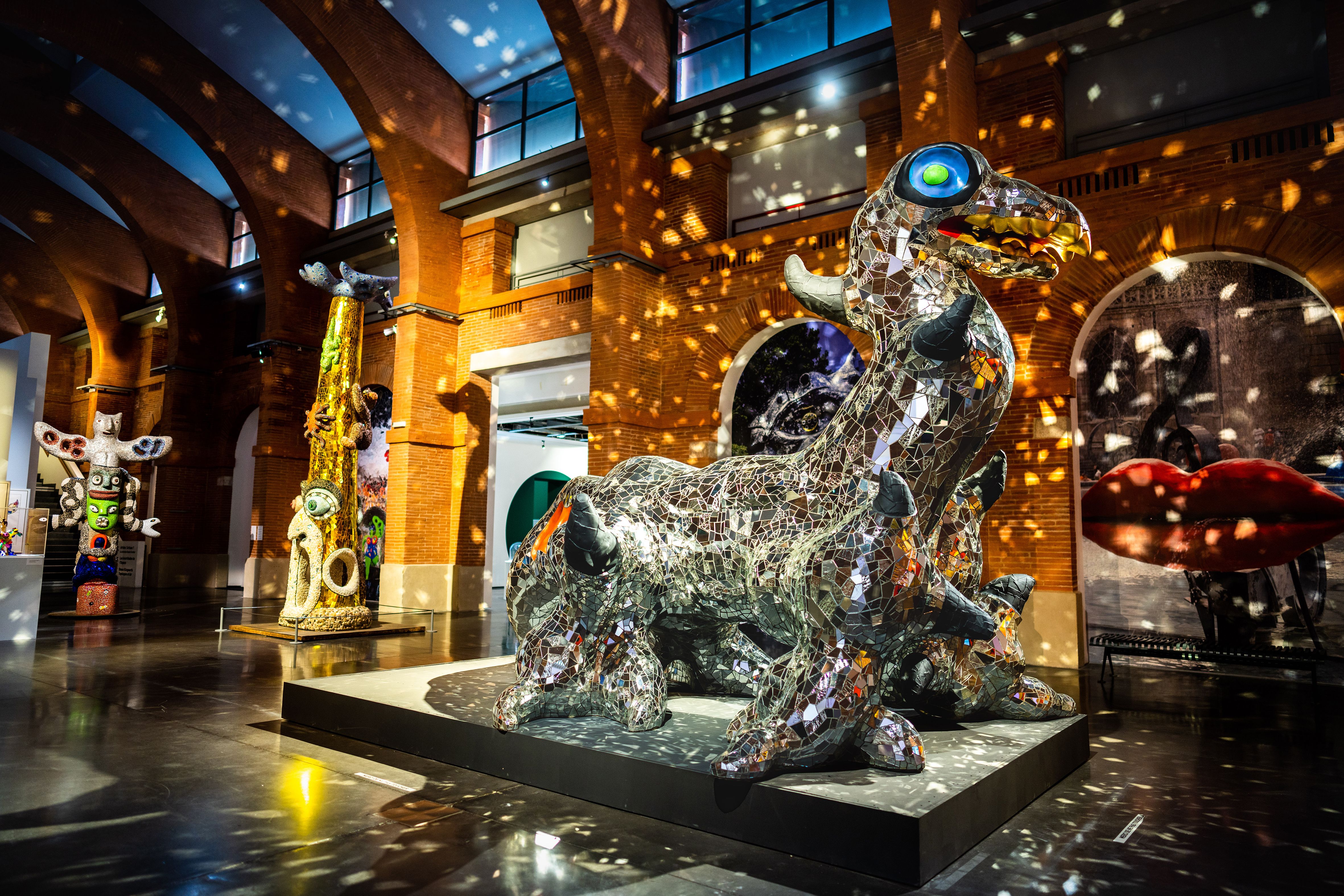
Niki de Saint Phalle
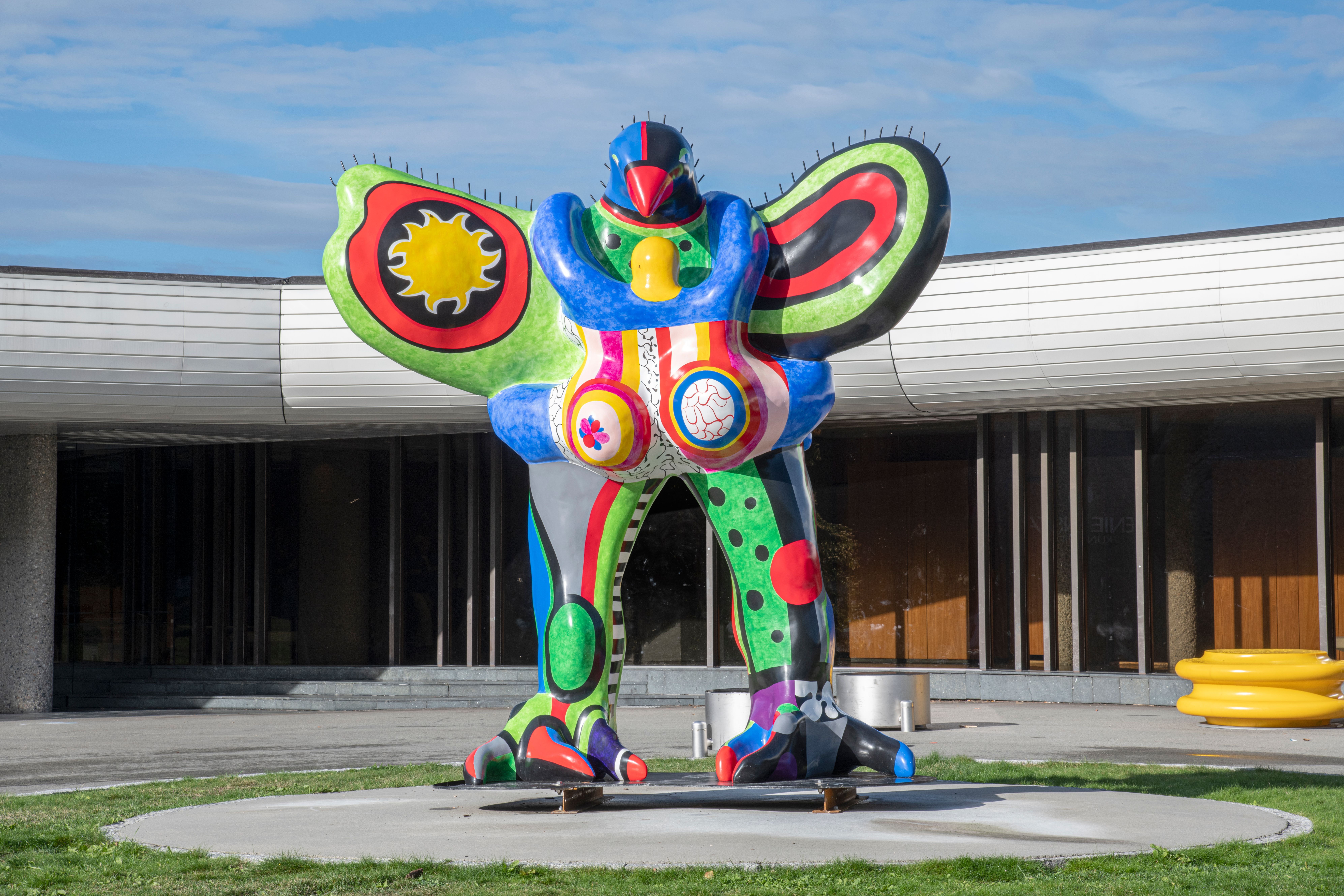
Niki de Saint Phalle
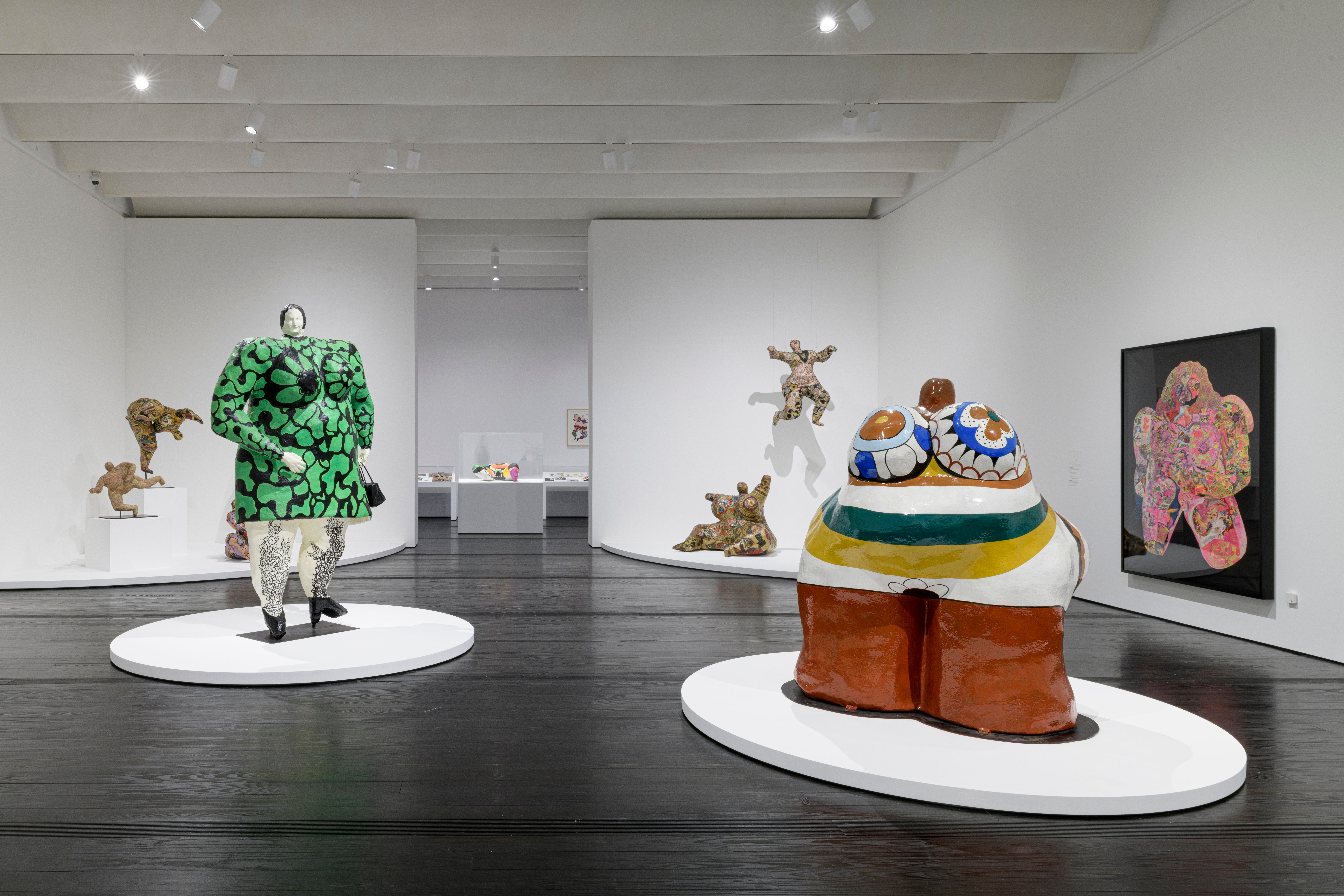
Niki de Saint Phalle
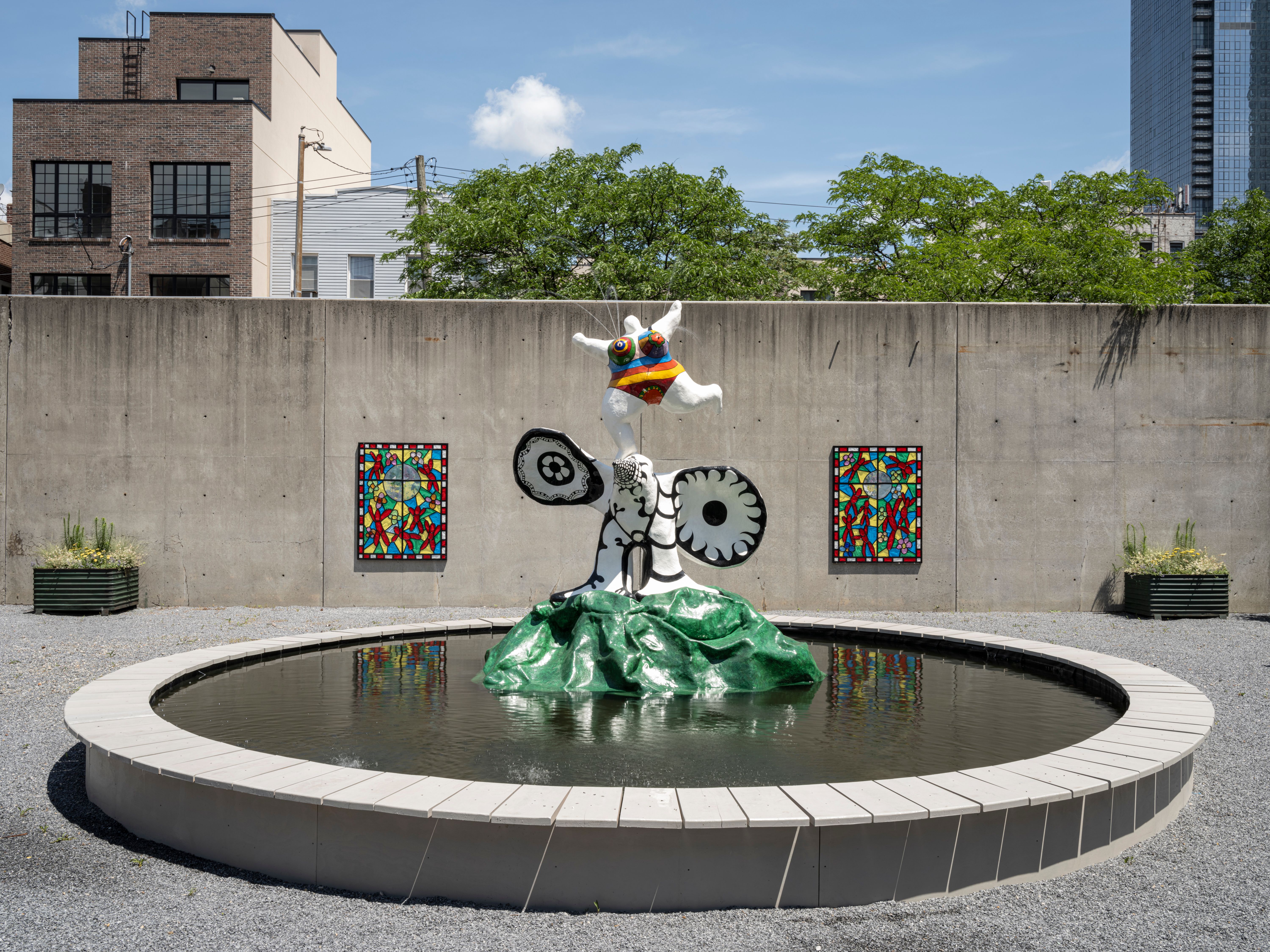
Niki de Saint Phalle
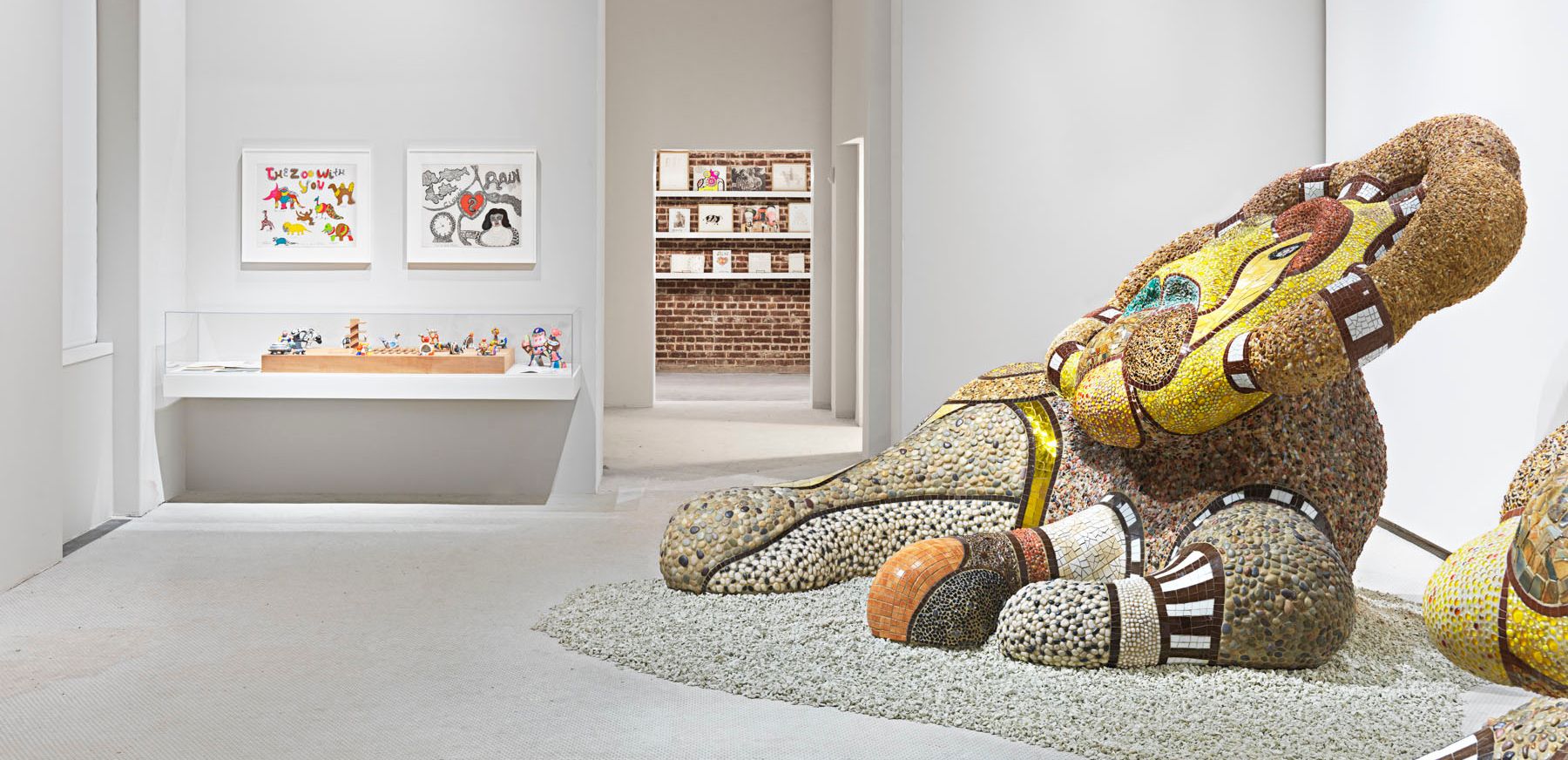
Niki de Saint Phalle

Niki de Saint Phalle
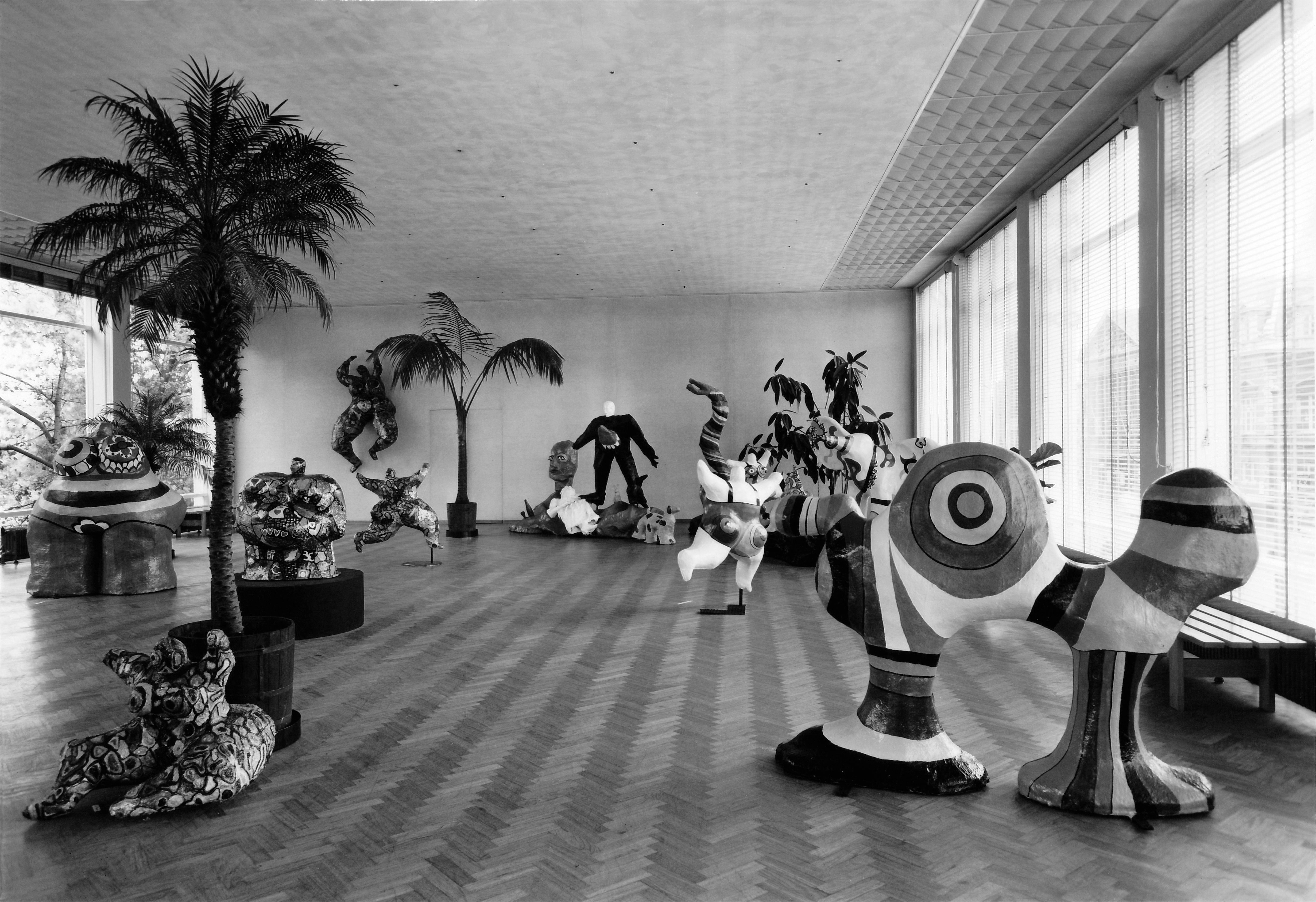
Niki de Saint Phalle
Biography
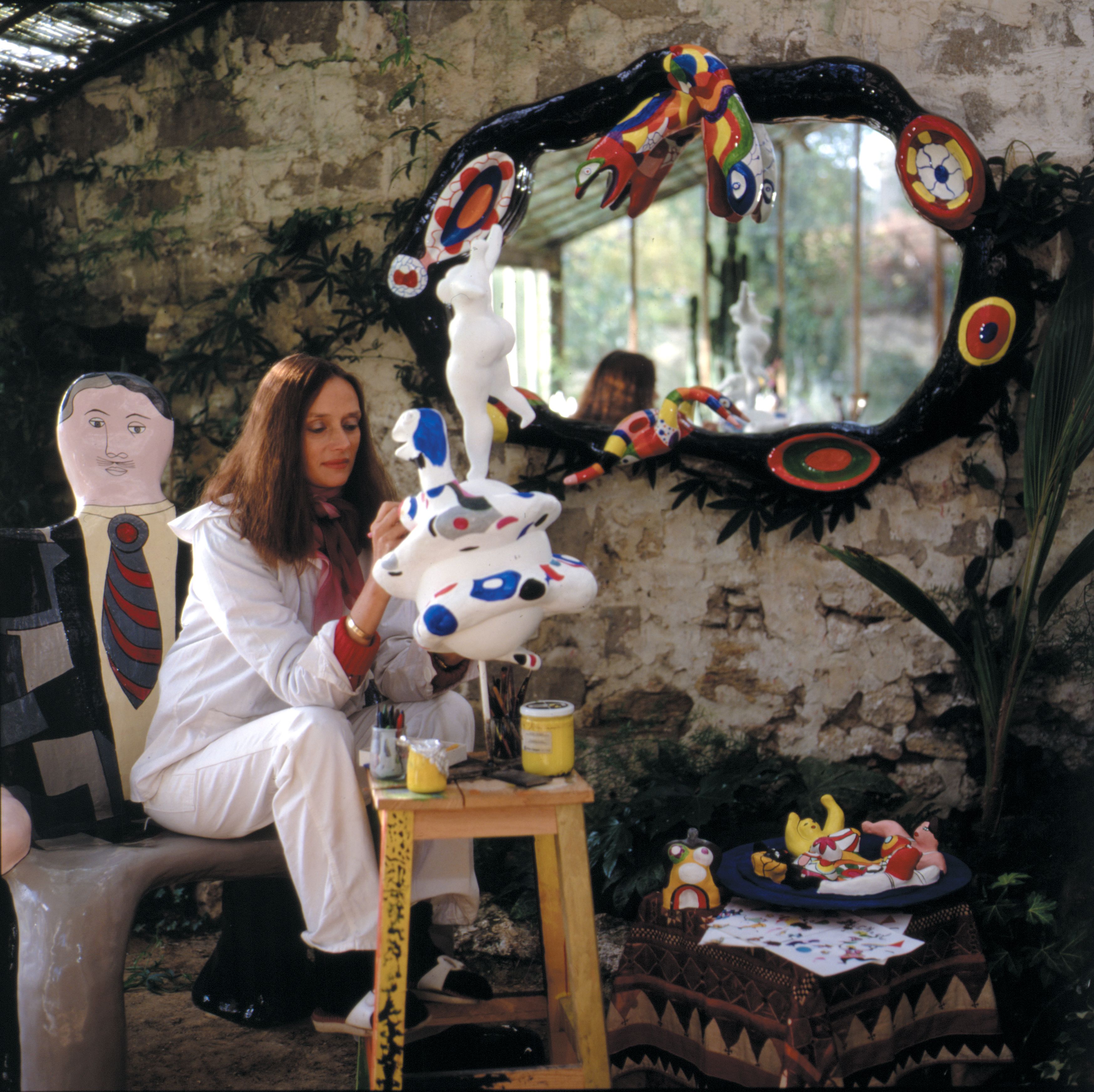
Niki de Saint Phalle surrounded by her sculptures painting Le monde, circa 1981. Photo by Laurent Codominas © 2010 Niki Charitable Art Foundation, All rights reserved.
Born 1930 in Neuilly-sur-Seine, France, Niki de Saint Phalle moved to the USA in 1933 and spent her childhood and youth in New York City. In 1952, Saint Phalle moved back to Paris and became immersed in French and ex-patriate artistic communities.
Her 1961 exhibition Feu à Volonté (Fire at Will), organized by art critic and cultural philosopher Pierre Restany at Galerie J, Paris, Saint Phalle showed for the first time her iconic Shooting Paintings. These works were made by firing a rifle at a primed canvas onto which bags of paint were affixed. As the shooting commenced, the punctured bags would release the colored paint. The resulting accidental-cum- automatic composition documents the activity of the various shooters who participated in the happening, Jasper Johns and Robert Rauschenberg included among them.
By the mid-1960s Saint Phalle worked less frequently on paintings, choosing instead to begin on a new series titled the Nanas. The title of this body of work draws on a slightly rude slang word for “woman” in French. Presented anew by a woman, the term was reapplied to important figurative sculptures—both fun and stately—depicting large, curvaceous women decorated with bright colors and motifs, oftentimes with limbs joyously—or frustratingly—raised. The largest and most famous of these sculptures is HON (1966), made for the Moderna Museet, Stockholm, in collaboration with artists Jean Tinguely (who would later become her second husband) and Per Olof Ultvedt. The reclining figure took up the entire exhibition hall and could be entered by visitors through a doorway between the large thighs.
Saint Phalle was one of only two women artists (the other being expressionist Joan Mitchell) to show with the influential Virginia Dwan Gallery in Los Angeles. Also in the American West, Saint Phalle assisted Jean Tinguely in his Study for an End of the World, No. 2 from 1962, a kinetic sculpture installed in the Nevada desert that was purposefully destroyed by explosion before a live audience. This work is considered to be one of the first Land Artworks: at that time, Saint Phalle wrote that she planned to create a large livable sculpture in the middle of the desert.
Her late projects took on an ever-more public dimension. In Tuscany, she built the great Tarot Garden sculpture park. The project was entirely self-funded: Saint Phalle sold large numbers of editioned works (and even a perfume bearing her name) in order to finance the project. Later, when invited to create a public sculpture for Jerusalem, she proposed a giant slide for all children to play in. When many of her friends and colleagues became gravely effected by HIV/AIDS, she wrote a book explaining to children what the disease was, what could be done to prevent it and how to help victims.
She died in 2002 in La Jolla, California.
Press
Hyperallergic
Curbed
Galerie
The Art Newspaper
ArtForum
The New York Times
Town & Country
Artforum
The New Yorker
Interior Design
Air Mail News
The Wall Street Journal
Cultured Magazine
Artnews
The Brooklyn Rail
Huffington Post
New Yorker
Hyperallergic
WNYC
Washington Post